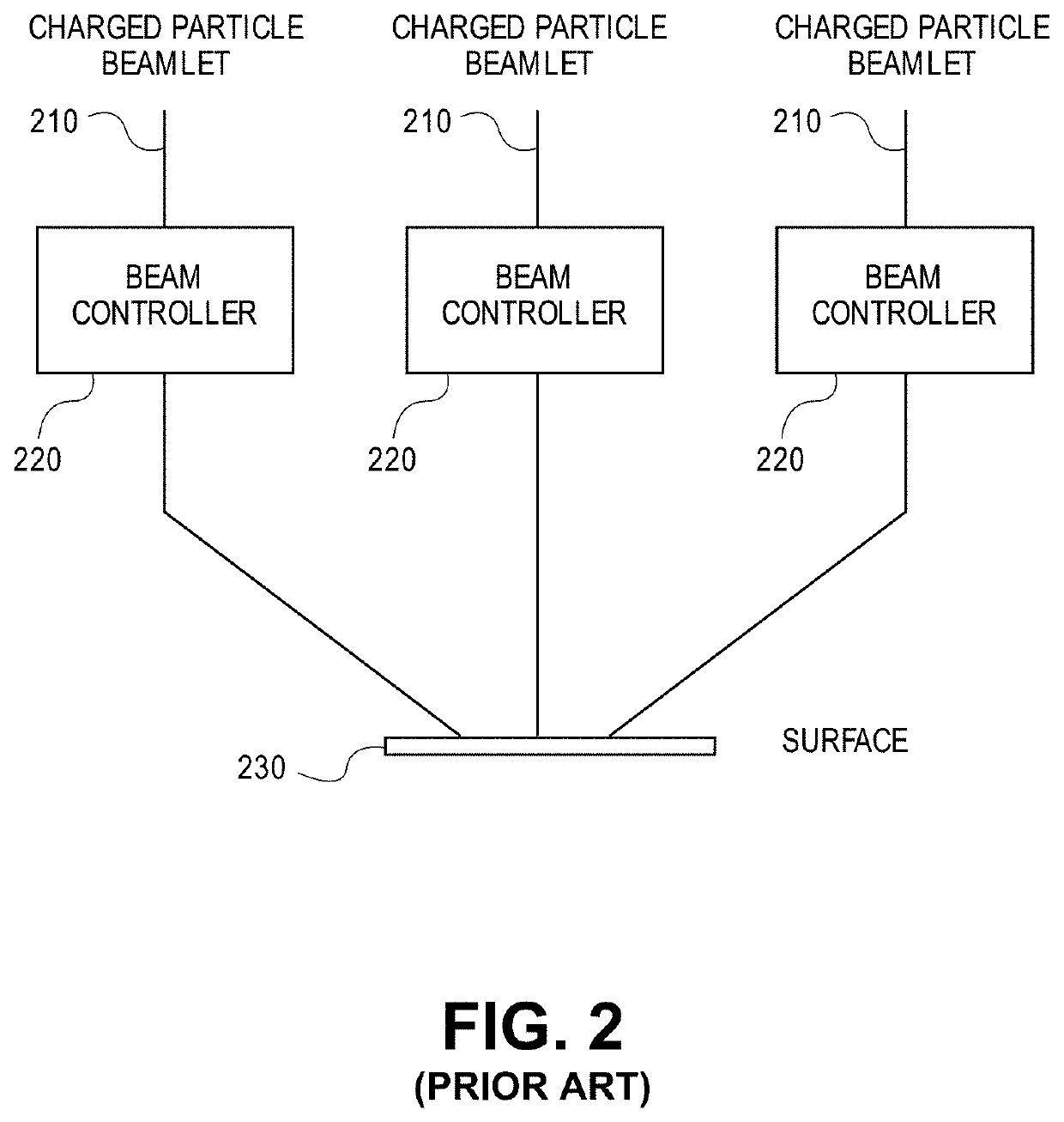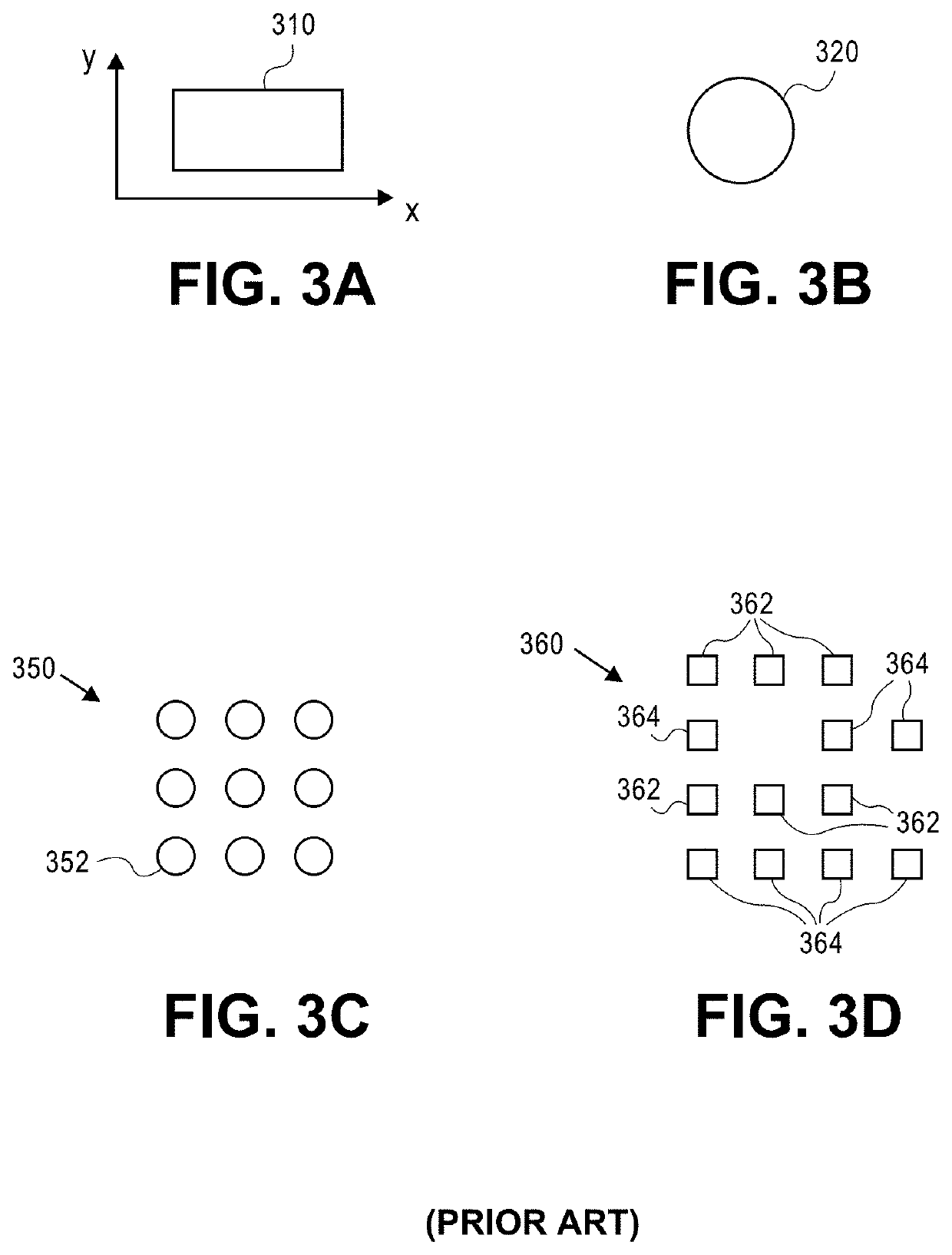Method and system for determining a charged particle beam exposure for a local pattern density
a local pattern density and particle beam technology, applied in the field of methods, can solve the problems of difficult to accurately translate the physical design to the actual circuit pattern developed on the resist layer, and the most difficult parts to write reliably on the surface of negative features
- Summary
- Abstract
- Description
- Claims
- Application Information
AI Technical Summary
Benefits of technology
Problems solved by technology
Method used
Image
Examples
Embodiment Construction
[0030]The present disclosure describes methods for reducing charged particle beam write time by reducing the dose required to expose a shot or a shape. Methods include calculating a pre-proximity effect correction (pre-PEC) maximum dose dynamically, based on a density of patterns to be written. Methods also include calculating pre-PEC maximum dose in a relatively low-density exposure area by casting an artificial background dose in the area.
[0031]The cost of charged particle beam lithography is directly related to the time required to expose a pattern on a surface, such as a reticle or wafer. Conventionally, the exposure time is related to the amount of exposure required to write the pattern. For the most complex integrated circuit designs, forming the set of layer patterns, either on a set of reticles or on a substrate, is a costly and time-consuming process. It would therefore be advantageous to be able to reduce the exposure required to form these patterns, on a reticle and other...
PUM
| Property | Measurement | Unit |
|---|---|---|
| wavelength | aaaaa | aaaaa |
| wavelengths | aaaaa | aaaaa |
| width | aaaaa | aaaaa |
Abstract
Description
Claims
Application Information
 Login to View More
Login to View More - R&D
- Intellectual Property
- Life Sciences
- Materials
- Tech Scout
- Unparalleled Data Quality
- Higher Quality Content
- 60% Fewer Hallucinations
Browse by: Latest US Patents, China's latest patents, Technical Efficacy Thesaurus, Application Domain, Technology Topic, Popular Technical Reports.
© 2025 PatSnap. All rights reserved.Legal|Privacy policy|Modern Slavery Act Transparency Statement|Sitemap|About US| Contact US: help@patsnap.com



